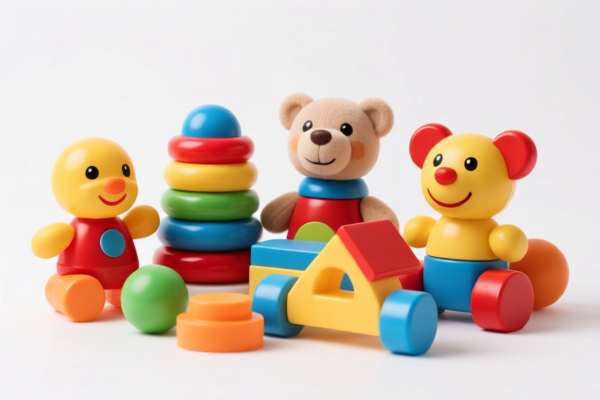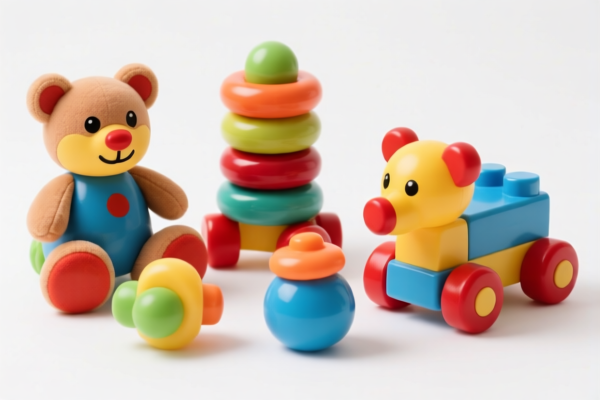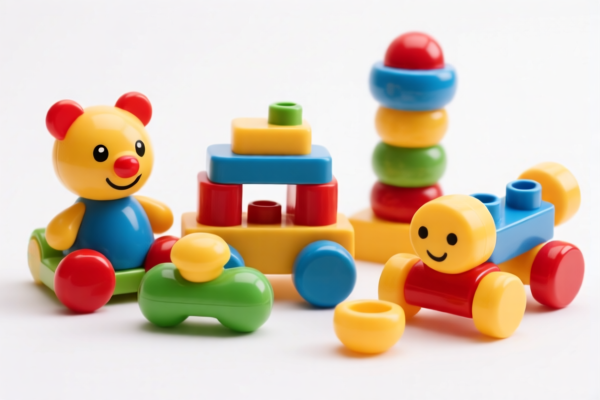| HS Code | Official Doc | Tariff Rate | Origin | Destination | Effective Date |
|---|---|---|---|---|---|
| 9503000071 | Doc | 30.0% | CN | US | 2025-05-12 |
| 9503000073 | Doc | 30.0% | CN | US | 2025-05-12 |
| 6815994170 | Doc | 55.0% | CN | US | 2025-05-12 |
| 6815992000 | Doc | 55.0% | CN | US | 2025-05-12 |




Twister Toys
Twister toys encompass a broad category of playthings designed to stimulate and challenge fine motor skills, problem-solving abilities, and often, creativity. They are characterized by their manipulation-based gameplay, typically involving twisting, turning, interlocking, or assembling components.
Materials
Common materials used in Twister toy construction include:
- Plastic: Predominantly ABS plastic for durability and moldability, often used in interlocking pieces and complex mechanisms.
- Metal: Stainless steel or alloys are found in higher-end puzzles and more robust constructions, providing weight and precision.
- Wood: Used in classic puzzles and educational toys, offering a natural aesthetic and tactile experience.
- Rubber/Silicone: Employed for grips, flexible components, or textured surfaces.
- Magnets: Increasingly common in modular puzzles and construction sets, enabling unique connection methods.
Purpose & Function
The primary purpose of Twister toys is to provide engaging play that promotes cognitive and physical development. Specifically, they aim to:
- Develop Fine Motor Skills: Manipulation of small parts enhances dexterity and hand-eye coordination.
- Enhance Problem-Solving Abilities: Many toys require logical thinking, spatial reasoning, and strategic planning to solve.
- Stimulate Spatial Reasoning: Understanding how pieces fit together and visualizing solutions are key skills fostered.
- Encourage Creativity: Some toys allow for open-ended building and design, promoting imaginative play.
- Reduce Stress: The focused nature of puzzle-solving can be calming and provide a sense of accomplishment.
Usage Scenarios
Twister toys are suitable for a wide range of ages and settings:
- Individual Play: Puzzles and brain teasers are often enjoyed as solitary activities.
- Family/Group Play: Construction sets and cooperative puzzles encourage interaction and teamwork.
- Educational Settings: Used in classrooms to reinforce STEM concepts and problem-solving skills.
- Therapeutic Applications: Occupational therapists utilize Twister toys to improve hand function and cognitive abilities.
- Travel/On-the-Go Entertainment: Compact puzzles and toys are ideal for keeping children occupied during travel.
Common Types
The category of Twister toys is diverse, encompassing numerous sub-types:
- Rubik's Cube & Variations: Classic color-matching puzzles that require algorithmic thinking.
- Brain Teasers (Metal/Wood): Interlocking puzzles that demand spatial reasoning and dexterity. Examples include disentanglement puzzles and sliding puzzles.
- Construction Sets (Modular): Sets of interlocking pieces that allow for building various structures. (e.g., magnetic tiles, building blocks).
- Tangrams: Dissection puzzles consisting of seven flat shapes, used to form various silhouettes.
- Fidget Toys: Small, handheld toys designed for tactile stimulation and stress relief (often incorporating twisting or turning mechanisms).
- Gear Puzzles: Puzzles involving interlocking gears that require precise manipulation to achieve a desired outcome.
- Sliding Puzzles: Puzzles where pieces are moved within a frame to recreate an image.
- Burr Puzzles: Interlocking wooden puzzles requiring disassembly and reassembly.
- Logic Puzzles: Puzzles that rely on deductive reasoning and problem-solving skills.
Twister toys fall under the category of recreational toys, specifically wheeled toys and other similar playthings.
Here are the relevant HS codes based on the provided information:
-
9503000071: Tricycles, scooters, pedal cars and similar wheeled toys; dollsʼ carriages; dolls, other toys; reduced-scale (“scaleˮ) models and similar recreational models, working or not; puzzles of all kinds; parts and accessories thereof “Childrenʼs productsˮ as defined in 15 U.S.C. § 2052: Other: Labeled or determined by importer as intended for use by persons: Under 3 years of age. This code applies to twister toys designed for children under 3 years old.
- 95: Toys, games and sports requisites; gymnastic or athletic equipment.
- 03: Tricycles, scooters, pedal cars and similar wheeled toys; dollsʼ carriages; dolls, other toys; reduced-scale (“scaleˮ) models and similar recreational models, working or not; puzzles of all kinds; parts and accessories thereof.
- 000071: Further specifies “Childrenʼs productsˮ as defined in 15 U.S.C. § 2052, intended for use by persons under 3 years of age.
-
9503000073: Tricycles, scooters, pedal cars and similar wheeled toys; dollsʼ carriages; dolls, other toys; reduced-scale (“scaleˮ) models and similar recreational models, working or not; puzzles of all kinds; parts and accessories thereof “Childrenʼs productsˮ as defined in 15 U.S.C. § 2052: Other: Labeled or determined by importer as intended for use by persons: 3 to 12 years of age. This code applies to twister toys designed for children between 3 and 12 years old.
- 95: Toys, games and sports requisites; gymnastic or athletic equipment.
- 03: Tricycles, scooters, pedal cars and similar wheeled toys; dollsʼ carriages; dolls, other toys; reduced-scale (“scaleˮ) models and similar recreational models, working or not; puzzles of all kinds; parts and accessories thereof.
- 000073: Further specifies “Childrenʼs productsˮ as defined in 15 U.S.C. § 2052, intended for use by persons between 3 and 12 years of age.
Tax Rate Information:
Both HS codes 9503000071 and 9503000073 currently have a total tax rate of 30.0%. This is comprised of a base tariff of 0.0% and an additional tariff of 0.0%, with a further additional tariff of 30.0% applicable after April 2, 2025.
Important Note:
These products are classified as “Children’s productsˮ as defined in 15 U.S.C. § 2052. Importers should ensure compliance with all relevant regulations pertaining to children’s products.
Customer Reviews
No reviews yet.